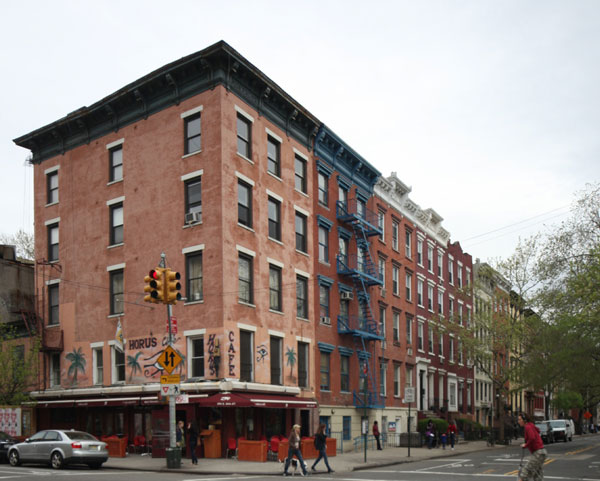
L.P.C. scheduled the hearing for Tues., Jan. 17, the earliest possible date, because the owner of one of the 26 buildings in the proposed district has filed plans to build a rooftop addition.
The addition proposed for 315 E. 10th St. could potentially affect the character of the proposed district, an L.P.C. spokesperson said.
The district was calendared on June 28, giving official notice that the commission was considering designation. Usually, dates of public hearings are open-ended after a building or district is calendared, but the Department of Buildings must notify the commission when it receives an application to alter a calendared property. D.O.B. notified the commission on Dec. 7 that the owner of 315 E. 10th St. filed for a permit to build a one-story rooftop addition.
D.O.B has a mandatory maximum of 40 days to review building permit applications, and the commission has 40 days after a permit application is filed to vote whether to designate a landmarked building or district.
“Given the significance of the proposed historic district, the commission has notified property owners that a public hearing will be held Tues., Jan. 17, 2012. This is the earliest date a hearing can be scheduled,” said Elizabeth de Bourbon, spokesperson for the commission.
Collectively, the 26 buildings on the north side of E. 10th St. between Avenues A and B reflect the 19th- and 20th-century history and development of the East Village.
The opening of Tompkins Square in 1834 led to the common assumption that the surrounding blocks would be filled with elegant homes similar to those that lined parts of nearby St. Mark’s Place. By the 1840s, stately row houses rising four stories above raised basements were built on the western half of E. 10th St.
Joseph Trench, the architect who designed the A.T. Stewart Department Store at Broadway and Chambers St., designed five of those early row houses. Trench helped introduce the Italianate style to the U.S., and the surviving ornamentation on those houses is among the earliest applications of the style to residential buildings in the city.
But the fashionable heyday of Tompkins Square began to fade by 1850 when immigrants from Germany and Ireland settled the neighborhood as wealthier residents moved uptown.
Single-family homes were converted to multiple dwellings or boardinghouses and tenements were built on the remaining vacant lots.
In addition to the early row houses and tenements, the district includes the Tompkins Square Branch Library, an existing city landmark. The branch was erected in 1904 as one of the city’s first libraries endowed by Andrew Carnegie.

















